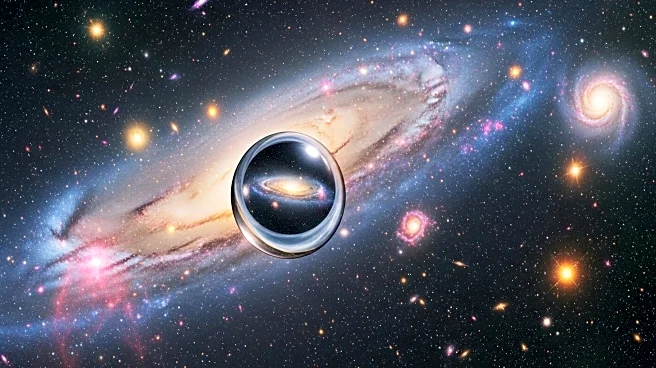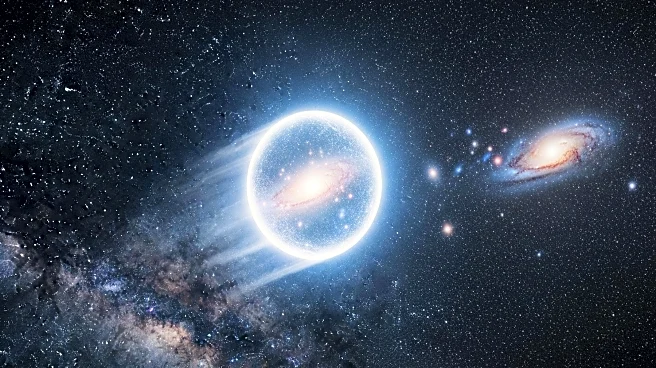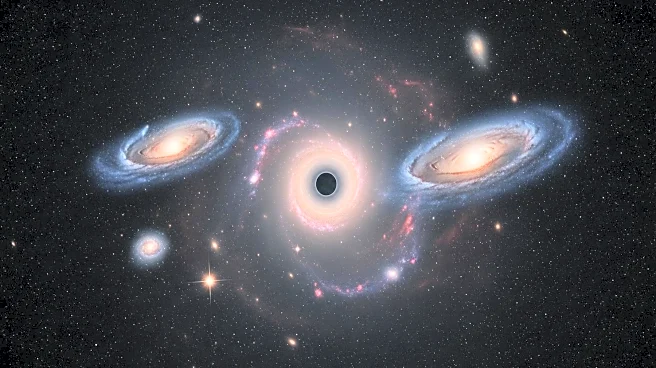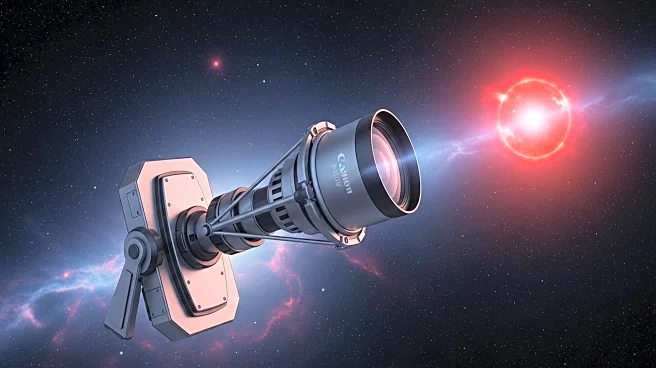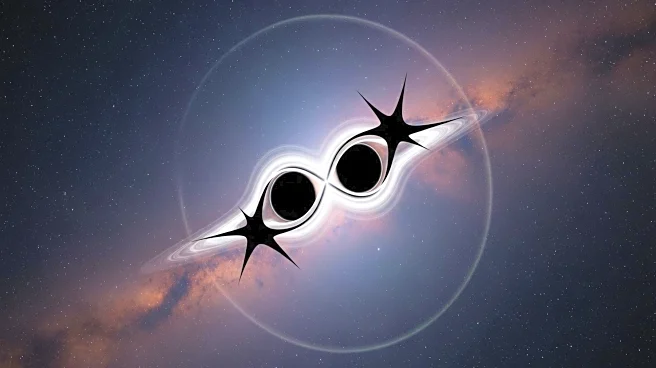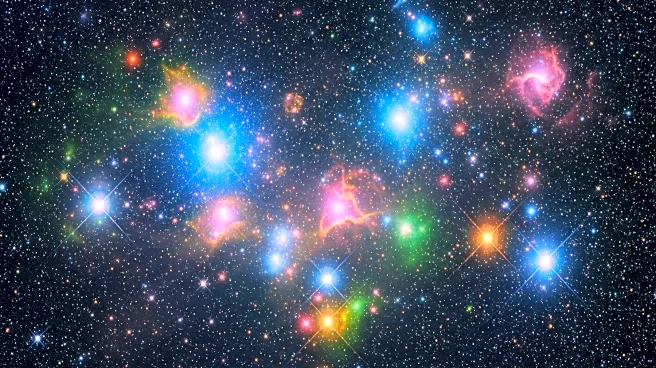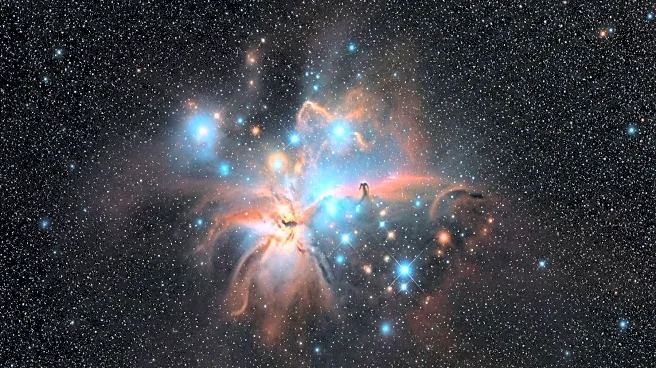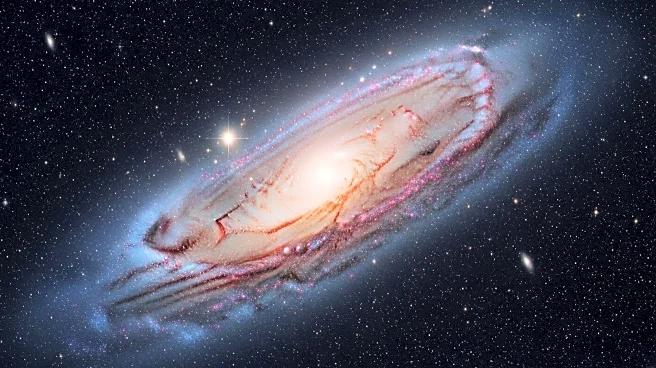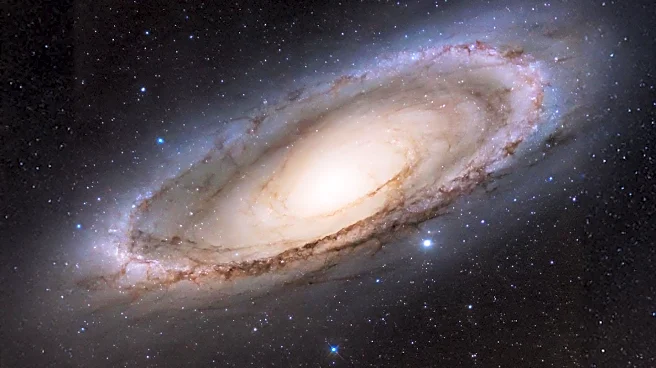What's Happening?
The Hubble Space Telescope has captured a stunning image of a star cluster within the Large Magellanic Cloud (LMC), a satellite galaxy of the Milky Way. This observation highlights the gravitationally bound groups of stars that form from the same molecular cloud. The LMC, located about 150,000 light-years from Earth, is an irregular galaxy that provides astronomers with unique opportunities to study stellar evolution and the interplay between stars and interstellar gas and dust. The image, which combines data from Hubble's Advanced Camera for Surveys and the Wide Field Camera 3, focuses on the second-largest star-forming area of the LMC, known as N11.
Why It's Important?
The Large Magellanic Cloud serves as a crucial site for understanding star formation and galactic structures due to its proximity and unique chemical makeup. By studying these star clusters, astronomers can gain insights into the processes of stellar evolution and the conditions that lead to star formation. The data collected by Hubble not only enhances our understanding of the LMC but also contributes to broader astronomical research by providing a comparative analysis of different galactic environments. This research is vital for developing models of how galaxies and stars evolve over time.

